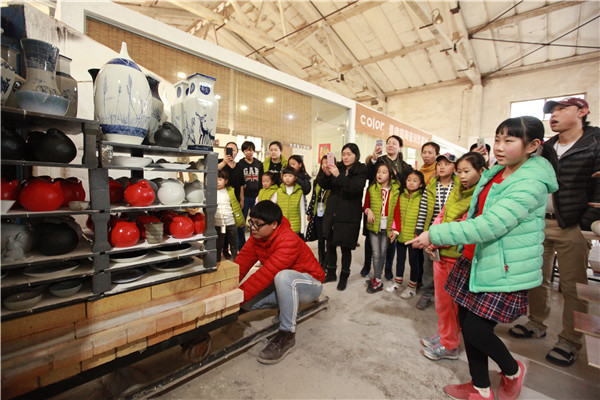 |
|
Color Edu's Study Tour at Jingdezhen, China's most famous kiln. [Photo provided to China Daily]
|
"Their senses are sharpened and in turn could serve the purpose of art-making more effectively," Wang Lijuan says.
A glimpse into one of her classrooms opens up a wonder world: some spiraling paper sculptures dangle from the ceiling while wooden sticks, iron nails, cloth and tubes of paint are scattered across a long table. Standing by the doorstep is a robot-like contraption created using a wide variety of materials including wood, metal and foamed plastic.
"We never say no to painting. Instead, we incorporate it into 'the bigger picture', one that's big enough for the children's free-running thoughts," Wang Lijuan says. "In other words, we are bent on conveying our thoughts, using anything that seems appropriate. The result could be a painting; it could also be a piece of sculpture or installation art, an audiovisual show, or even a theatrical work."
Wang Lijuan says she once harbored doubts about her own method, but had those qualms dispelled when she completed her postgraduate study in art education at the China Central Academy of Fine Arts in Beijing.
"That was in 2004, and we had teachers from all over the world - the United States, Britain, Germany and Japan. I remember a professor from Columbia University talking about using music as inspiration: he had asked students to draw out what they heard, in lines. This is in fact exactly what I did for my students, even before I came to Beijing."


























 Raymond Zhou:
Raymond Zhou: Pauline D Loh:
Pauline D Loh: Hot Pot
Hot Pot Eco China
Eco China China Dream
China Dream China Face
China Face






